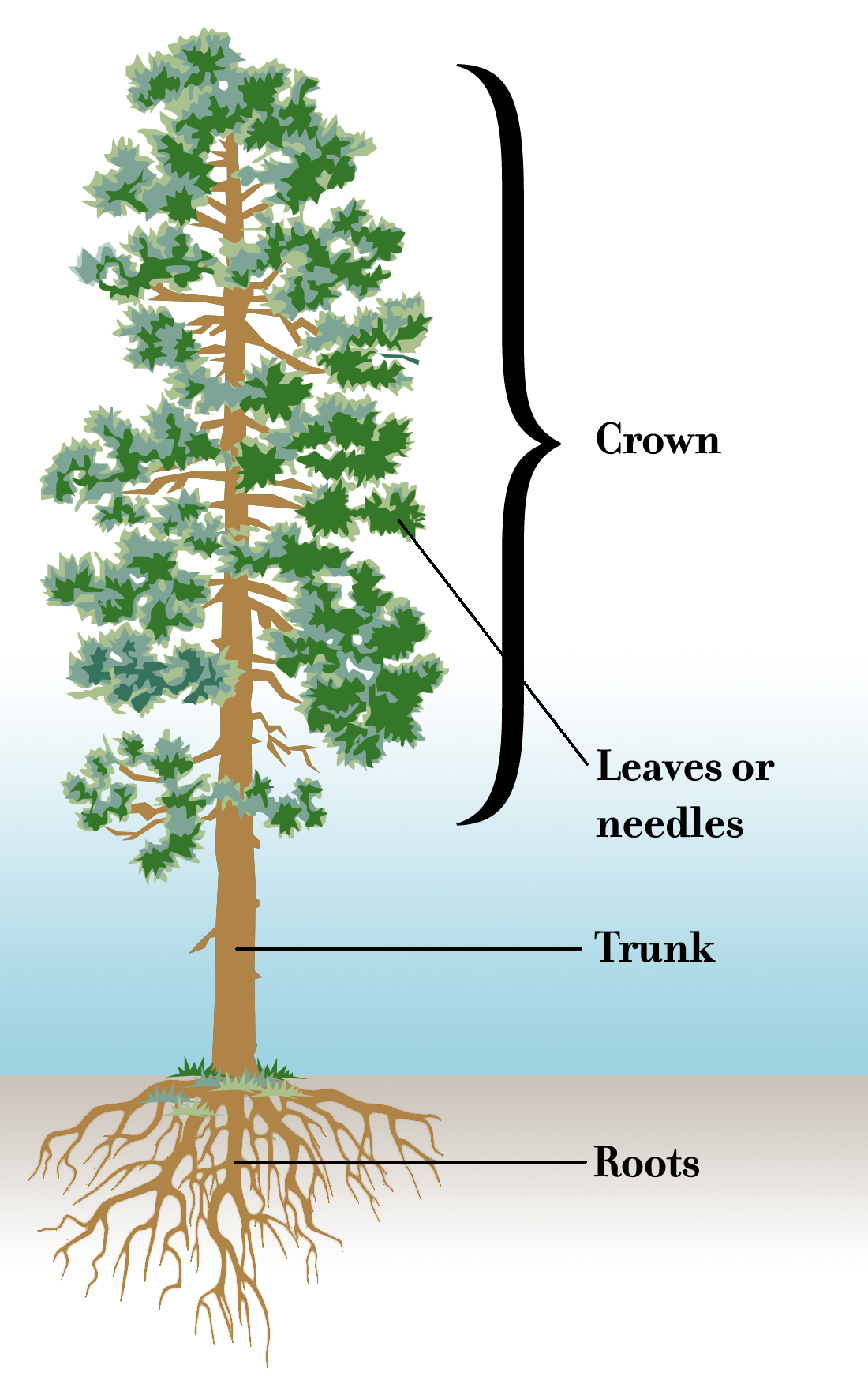
There are two main types of trees: broadleaf trees and conifers. Broadleaf trees have wide, flat leaves. Conifers, which are the most common type of tree found in Oregon forests, have narrow leaves that look like needles or scales.
Broadleaf trees generally have leaves that change color, drop off in the fall and are regrown in the spring. These trees essentially “hibernate” during the winter. When the sun shines more in the spring, the trees grow new leaves.
In contrast, most conifers have leaves that stay green all year and don’t drop off in the fall. That’s why conifers are sometimes called "evergreens." Forests that grow in places with cold, wet winters often have lots of conifer trees. A conifer’s needles are smooth and flexible, so snow slides off easily. This prevents the trees branches from getting weighed down by snow and breaking.
Parts of a tree
Each part of a tree serves a different function.

The flowers on trees produce fruits, nuts and cones. These contain seeds to grow the next generation of trees. Most conifer trees have scaly cones to protect their seeds. When the seeds are ready to grow, the scales of the cone open and the tiny seeds fly out on papery wings.
The trunk of the tree supports the branches, which hold the leaves and the flowers, fruit or cones. Underground, the roots anchor the tree. They also pull up water and nutrients from the soil.
Inside a tree
Under a protective layer of bark, each tree trunk has a series of inner layers. Moving from the outside in, the first layer is the phloem, or inner bark. It transports sap and sugars from the needles or leaves to nourish the rest of the tree. Next is the cambium. This is the growing part of the tree where new layers of wood and bark are produced. Under the cambium is the xylem, or sapwood. This is where water and nutrients are transported to the rest of the tree. At the center of the tree trunk is the heartwood. The heartwood helps hold up the tree and gives it a rigid structure.

In addition to figuring out how old a tree is by counting the growth rings it produces each year, you can see how fast it grew. A wide ring shows that the tree grew quickly that year. If the ring is narrower, the tree grew slowly.
Forest Fact Break: Tree Biology
This two-minute animated video looks inside a tree to figure out what’s going on in there: tree biology, photosynthesis, growth rings and even a tree’s role in reducing atmospheric carbon and lessening the impacts of climate change. Turns out there’s a lot of interesting stuff hiding under a tree’s bark. This video is part of OFRI’s Forest Fact Breaks series, which uses bold animated graphics, sound effects and narration to teach about natural resource topics in a fun, easy-to-understand way.